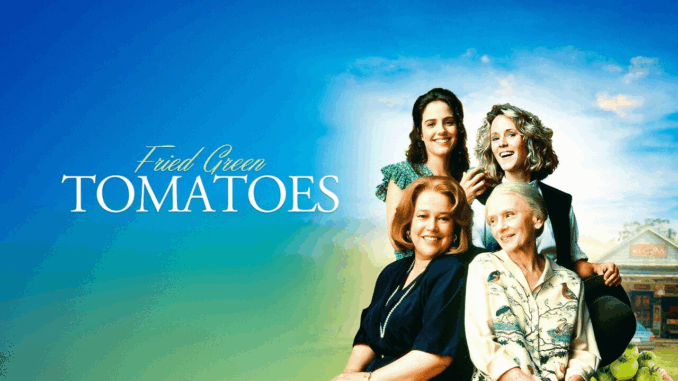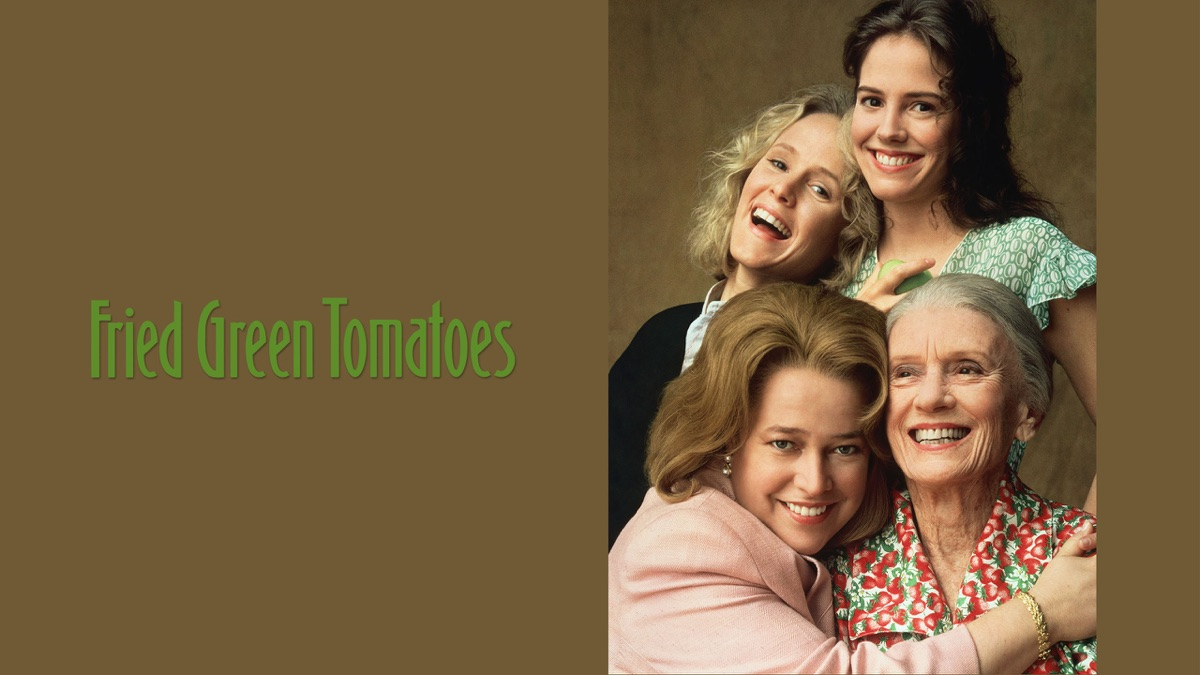
A Story Within a Story That Defies Time
At its heart, Fried Green Tomatoes is not just a tale of the past—it is a conversation between generations, an act of remembering that blurs the line between reality and narrative. Told in a dual timeline structure that shifts between the 1920s and the 1980s, the film operates as a cinematic time machine, guided by the voice of Ninny Threadgoode and carried by the imagination of Evelyn Couch.
Rather than simply recounting events, Fried Green Tomatoes uses memory as both its narrative device and emotional core. As Ninny speaks, the past comes alive—not as distant history, but as living memory. This choice elevates the film beyond a simple period piece, transforming it into a meditation on the power of storytelling to bridge generations, preserve identity, and shape the present.
Ninny Threadgoode: The Gatekeeper of Memory
Jessica Tandy’s portrayal of Ninny Threadgoode is one of the most quietly powerful performances in the film. Ninny is not just a sweet old woman in a nursing home—she is a master storyteller, a keeper of truths, and possibly a mythmaker. Through her voice, the dusty, forgotten town of Whistle Stop springs to life again, as vivid and vital as the day it thrived.
Ninny’s purpose is not simply to entertain Evelyn. She offers something deeper: a way for Evelyn to see herself differently, to reclaim the courage and vitality she thought she’d lost. In that way, Ninny becomes a stand-in for countless elders whose stories reshape the lives of those who listen.
But questions linger throughout the film. Is Ninny really recounting the life of her “sister-in-law” Idgie, or is she Idgie herself, retelling her own story through the safety of fiction? The film never answers this definitively, and in doing so, it preserves the sacred mystery of memory—how truth can be both factual and emotional, literal and symbolic.
Whistle Stop: A Town Preserved in Time

The town of Whistle Stop is portrayed not as a historical backdrop, but as a breathing world—a place suspended in amber through the power of recollection. From its bustling café to its train tracks, dusty roads, and front porches, the town becomes more than just scenery; it becomes a character.
Its vibrancy in memory contrasts starkly with its present-day abandonment. When Evelyn visits the remnants of Whistle Stop near the end of the film, she’s struck by the silence, the decay. Yet the viewer, having spent nearly two hours immersed in its life, sees it differently. We carry Whistle Stop with us, just as Evelyn now does.
This interplay between past and present highlights the film’s emotional thesis: that places never truly die if someone remembers them. That towns, like people, can live again through stories.
Evelyn’s Transformation Through Story
Evelyn’s journey is not sparked by therapy, a dramatic event, or even direct action. It begins with listening. By sitting with Ninny and allowing herself to be transported by her tales, Evelyn begins to reframe her own life. She recognizes patterns of fear and invisibility that echo Ruth’s and Idgie’s struggles. She draws strength from their defiance and love. And slowly, she starts to believe that she, too, can change.
Her transformation is subtle but profound. From shrinking in the shadows of her husband and society to literally roaring in a parking lot, Evelyn’s growth is fueled not by fantasy but by inherited courage. She is what happens when one woman’s story becomes another’s survival guide.
In a world where personal reinvention is often framed as a solo endeavor, Fried Green Tomatoes offers a different view—one in which healing and change are communal acts, passed down through generations like recipes or family heirlooms.
Storytelling as Legacy and Resistance
Throughout history, storytelling has been a way for marginalized people—especially women—to preserve culture, resist erasure, and pass down hard-won wisdom. Fried Green Tomatoes honors this tradition by framing its central narrative as an oral history passed from an older woman to a younger one.
Ruth and Idgie’s story is not in the newspapers. It’s not in textbooks. It survives because Ninny tells it. And in telling it, she ensures that their love, their bravery, and their café do not disappear.
This act of storytelling becomes a form of resistance—against time, against silence, against the societal forces that tried to suppress women like Idgie, Ruth, Sipsey, and even Evelyn. To speak their names, to tell their story, is to keep them alive.
The Blurred Line Between Fiction and Memory
One of the film’s most artful achievements is its treatment of memory not as a fixed record, but as a living, breathing entity. In Ninny’s version of events, the characters are bold, the scenery rich, the emotions heightened. The flashbacks are not shown as neutral reconstructions—they are infused with feeling, shaped by the teller’s perspective.
This choice invites viewers to reflect on the nature of memory in their own lives. How many of our family stories are absolutely true? How many have been softened, reshaped, or sharpened by time? Fried Green Tomatoes gently suggests that accuracy isn’t always the point. What matters is what we carry forward—what the story means to us now.
A Film That Grows With You
One of the reasons Fried Green Tomatoes has endured across generations is that it changes depending on when you watch it. As a young viewer, you may fall in love with Idgie’s wild spirit or Ruth’s quiet strength. As an adult, you may see Evelyn with more sympathy, understanding the weight of her discontent. As a senior, you may feel kinship with Ninny’s desire to be heard, to be remembered.
That timeless, evolving quality is rare in film. It’s a testament to the story’s emotional layering and the filmmakers’ restraint in allowing the narrative to unfold without forced sentimentality.
Each time you return to Fried Green Tomatoes, you don’t just revisit Whistle Stop—you revisit yourself.
Conclusion: A Love Letter to Memory
In a world that often rushes forward, obsessed with progress and productivity, Fried Green Tomatoes offers a quiet, powerful reminder of the value of looking back. It tells us that memory is not about nostalgia for its own sake, but about holding on to what matters. About preserving not just facts, but feelings.
Through Ninny’s stories, Evelyn finds herself. Through the memory of a town that once was, a new version of womanhood is born. And through the film itself, a generation of viewers discovers that stories—especially those told with love—are the most enduring form of time travel.
